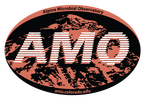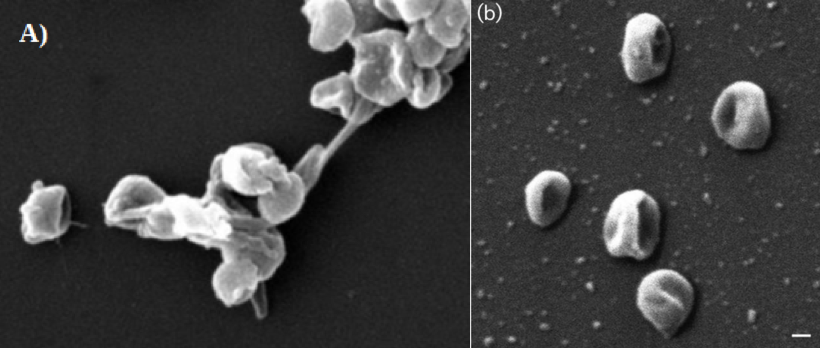|
Nitrososphaera viennensis By Eli Gendron The microbe we will be covering this month comes to us from our nearest neighboring domain on the tree of life: The Archaea. While many think of the Archaea rare in today’s world, the truth is that Archaeal species can be found in almost every environment we look. Nitrososphaera viennensis can even be found in everyday soils that are located in our own backyards, and was originally isolated from garden soil in Vienna, Austria (Stieglmeier et al. 2014). While displaying unique morphological traits (Figure 1) N. viennensis is interesting to researches and the public alike for its ability to feed on ammonium (NH4+). Research has already shown that a close relative of N. viennensis known as Nitrososphaera gargensis can be a potential tool in combating nitrogen pollution in water[1]. N. viennensis has even been found in manure piles produced from farmland waste[5] and may be important in the breakdown of ammonium in fertilizers. I would like to highlight that due to the worldwide distribution of these organisms, and their relatives, they play a key role in the global nitrogen cycle. Nitrogen pollution produced by human activity has severally altered the world’s nitrogen cycle[2]. Thus understanding how these organisms’ ecology will help us understand how we have impacted the natural world and how we might be able to look back to that world to find solutions.
References: 1. Courtens, E. N., Spieck, E., Vilchez-Vargas, R., Bodé, S., Boeckx, P., Schouten, S., … Boon, N. (2016). A robust nitrifying community in a bioreactor at 50 °c opens up the path for thermophilic nitrogen removal. ISME Journal, 10(9), 2293–2303. http://doi.org/10.1038/ismej.2016.8 2. Galloway, J. N., Leach, A. M., Bleeker, A., & Erisman, J. W. (2013). A chronology of human understanding of the nitrogen cycle. Philosophical Transactions of the Royal Society of London. Series B, Biological Sciences, 368(1621), 20130120. http://doi.org/10.1098/rstb.2013.0120 3. Stieglmeier, M., Klingl, A., Alves, R. J. E., Rittmann, S. K. M. R., Melcher, M., Leisch, N., & Schleper, C. (2014). Nitrososphaera viennensis gen. nov., sp. nov., an aerobic and mesophilic, ammonia-oxidizing archaeon from soil and a member of the archaeal phylum Thaumarchaeota. Inter. J. of Sys. and Evo. Micro., 64(8), 2738–2752 4. University of Vienna. (2011, April 28). Novel microorganism 'Nitrososphaera viennensis' isolated.ScienceDaily. Retrieved November 29, 2017 from www.sciencedaily.com/releases/2011/04/110425153556.htm 5. Yamamoto, N., Oishi, R., Suyama, Y., Tada, C., & Nakai, Y. (2012). Ammonia-Oxidizing Bacteria Rather than Ammonia-Oxidizing Archaea were Widely Distributed in Animal Manure Composts from Field-Scale Facilities. Microbes and Environments, 27(4), 519–524. http://doi.org/10.1264/jsme2.ME12053
0 Comments
|
AuthorVarious lab members contribute to the MoM Blog Archives
October 2023
Categories |


 RSS Feed
RSS Feed
